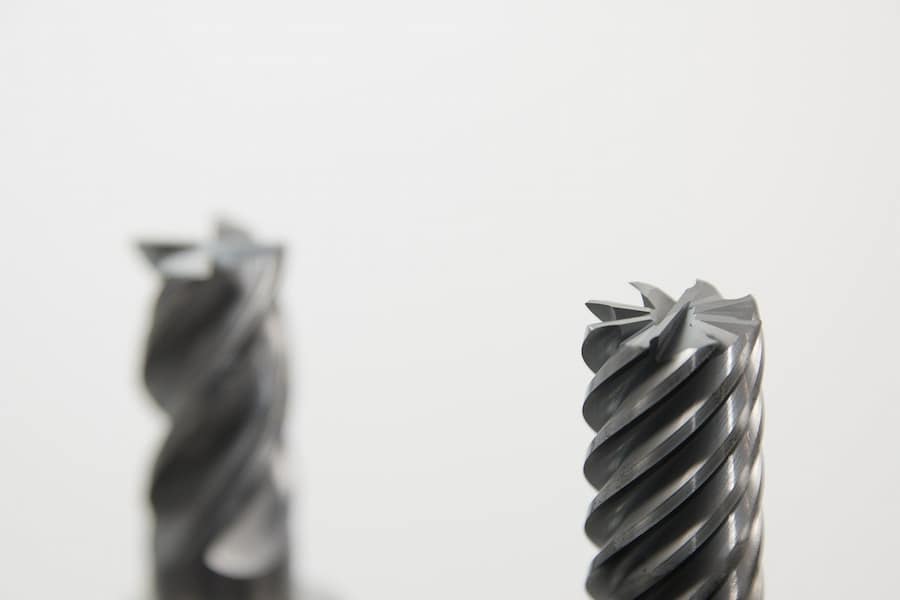What size drill bit for ¼” tap is the right choice? A #7 drill bit works for most projects, but this can vary based on other factors. For example, various ¼” taps have different requirements depending on their thread count.
Contents
How to Figure Out What Size Drill Bit for ¼” Tap
There are two things to keep in mind when deciding what size drill bit for a ¼” tap is appropriate for a project: how many threads per inch you want and whether you’re drilling harder or softer materials.

How Drill Bit Sizing Works
Drill bit sizing is significantly more complicated than it looks to people who are just entering the field, but it’s easy to keep track of once you learn how people size things.
The first component is the threads per inch, which is also known as the thread pitch. For ¼” drill bits, the threading options are 20, 28, or 32 threads per inch.
In most cases, the lowest (or “coarsest”) thread pitch in a given sizing range is the best choice. This is what most instruction manuals assume you’re using unless they specifically state otherwise.
However, higher thread pitches (sometimes called “fine” threads) can be useful if you’re in situations where you need to make precise adjustments or drill into sturdy materials. Fine threads strip easier than coarse ones, though, so they’re not always the next choice.
The second component is tap drill size, which is not the same thing as general drill bit sizing. Taps can be either 75% (better for softer materials) or 50% (better for harder materials), so what you’re drilling into can impact your ¼” drill bit size.
In this context, hard materials include things like hardened steel, cast iron, or alloy steel. Wood is generally a soft material because even so-called “hardwoods” are far softer than treated metal.
I can’t list the relative hardness and softness of every material here, so if you need to know, talk to the manufacturer or test your drill on some extra pieces of the material before you begin your project.
Do Different ¼” Taps Need Different Drill Bits?
You do need different drill bits for various ¼” taps. There are four different drill bits suitable for ¼” taps, and which one you’re using depends on your threads per inch and your tap drill size.

I’ll explain those in just a moment, but the important thing to remember when drilling a ¼” tap is that changing your thread size does not always change your drill bit size.
That may sound counter-intuitive at first, but it’s the result of experience gained through extensive testing over time. Factors like overall width play into how much drill bit sizes change when you adjust the thread count or move between hard and soft materials, and it’s not quite a linear progression.
As you can see on this chart of US number and letter drill sizes, changes aren’t linear. Instead, they follow an uneven curve, with noticeable bumps around the #55, #30, #3, and N sizes.
The fact that changes don’t have a perfect curve means there’s no formula for guessing which size you should use. Instead, always refer to charts until you’ve memorized the drill bit sizes for each tap size.
The best sizes of drill bits to use for a ¼” tap are the #7 (#8 drill bit in a pinch), the #3, a 7/32″, or a #1. Here’s how to choose them.
What Size Drill Bit Do You Use for a ¼” 20 Tap?
The best size drill bit for a 1/4″ 20 tap is a #7 if you’re using 75% thread or a 7/32″ if you’re using 50% thread. I’ve seen some people suggest a 13/64″ bit for the 50% thread instead, not the 1-64 tap with drill bit size #53 and that also works. Getting a little more precision when working with hard materials isn’t a bad thing.
What Size Drill Bit Do You Use for a ¼” 28 Tap?
The best size of drill bit for a 28-thread project is the #3 for 75% thread, or the #1 for 50% thread.
In many ways, a ¼” 28 tap at 50% thread is the default for the entire industry, which makes it stand out a little from almost all other thread sizes. ¼” taps are an industry standard for many reasons, but part of it is that it’s simply easier to remember than something like 7/16″. It feels like a good baseline to start measuring things from, so it is.
However, as I mentioned above, it’s actually the coarsest threads that people use most. This means that while the 28 tap is technically the middle of the default range, it’s not as popular in projects as the 20 tap is.

What Size Drill Bit Do You Use for a ¼” 32 Tap?
For a 32-pitch situation, use a 7/32″ bit for 75% thread or the #1 for 50% thread.
The finest thread pitch in ¼” taps sees more use than some of the less-common screw options, and it’s why the 7/32″ and #1 are among the most useful drill bit sizes to keep in your toolbox.
Going from 20 to 28 threads is about a 40% increase, so that’s why you see a difference in size. However, going from 28 to 32 is only a 1/7th increase in thread count, so these are close enough that you can use the same drill bit size.
This pattern doesn’t hold true with all drill bit sizes, though, even among those with similar patterns. This is ultimately another way that ¼” taps stand out from the crowd.
Get Drilling with a ¼” Tap
So, having learned what size drill bit for ¼” tap projects you’re going to need, all that’s left is putting it into practice. Every drill bit size performs a little differently, so when you’re drilling into new materials, try to make a few practices runs before you begin your project in earnest. That can help you avoid awkward, expensive mistakes.
